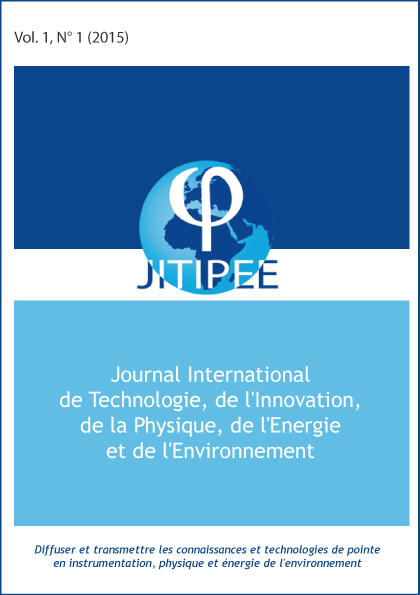Analyse de la tension de contact pour des interfaces dégradées par des arcs de fortes puissances
DOI :
https://doi.org/10.18145/jitipee.v1i1.67Résumé
Dans les contacts électriques de type relais, l’augmentation de la résistance de contact peut provenir d’une dégradation de l’interface de contact causée par des arcs électriques. Si ces dégradations sont importantes, elles peuvent causer l’apparition d’un phénomène de non-linéarité. En particulier, la loi d’Ohm n’est plus applicable au-delà d’un certain courant. Nous étudierons ici le passage du courant à travers une surface dégradée par des arcs d’ouverture sous une tension d’alimentation de 42VDC, un courant de 90A et une force de contact de 14N. Afin de tracer les caractéristiques courant-tension, deux rampes de courant sont appliquées, l’une croissante de 50mA à 75A et l’autre décroissante. Pour de forts courants, la tension de contact tend vers une valeur limite dépendant de la nature du matériau de contact. Quelques hypothèses sont émises pour expliquer cette saturation de la tension de contact, celle-ci pouvant être due au claquage des couches isolantes formées à la surface des contacts dégradés ou bien à l’élargissement des spots de contact.
Références
Timsit R.S. (1988), Electrical Contact resistance properties of stationary interfaces,
IEEE Holm Conference, pp 1-19.
Slade P.G. (1999), Electrical contacts: principles and applications, Marcel Dekker.
Holm R. (2000), Electrical contact, Theory and applications, 4 th edition, Springer.
Chen Z.K., Arai K., Sawa K. (1994), The influence of oxygen concentration on contact resistance behaviours of Ag and Pd materials in DC breaking arcs, International Conference on Electrical Contacts, pp. 79-87.
Hasegawa M., Makimoto J., Minoura N., Sawa K (2000), Arc discharge and contact resistance characteristics of Ag, Cu and Pd contacts in air and nitrogen atmosphere, International Conference on Electrical Contacts, pp. 45-50.
Krätzschmar A., Herbst R., Mützel T., Niederreuther R., Braumann P. (2010), Basic investigations on the behaviour of advanced Ag/SnO 2 materials for contactor applications, IEEE Holm Conference, pp. 127-133.
Yoshida K., Nakamura S., Tanimoto S. (2008), Relationship between arc duration and contact resistance of Ag alloys contacts mounted on relays, International Conference on Electrical Contacts, pp. 125-130.
Sone H., Takagi T. (1989), Role of the metallic phase arc discharge on arc erosion in Ag contacts, IEEE Holm Conference, pp. 79-85.
Chen PZ.K., Sawa K. (1995), Effect of oxide film and arc duration characteristics on Ag contact resistance behaviour, IEEE Trans. Comp. Packg. Manuf. Techn. Part A, vol.18, n°2, pp. 409-416. Doi : 10.1109/95.390325



